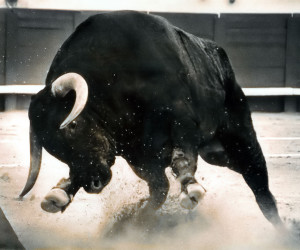If you’re experiencing a sudden case of déjà vu, you might want to schedule a visit with a neurologist. According to Wikipedia, it could be a symptom of epilepsy. Of course, if you happened to stumble upon the Adrian Beltre article that I wrote almost a year ago to the day, that would probably account for the sense of familiarity that you’re feeling at the moment. Same series, same title. It’s not laziness. I prefer to think of it as being efficient. Yes, that sounds perfectly reasonable. We’ll go with that. But why am I writing about the Rangers third baseman yet again this season? Has his production fallen off of a cliff? Has he found the fountain of youth at age 37? Has he overcome his bizarre head-touching phobia?
The main reason that I’ve decided to reevaluate Beltre is because of his advanced age. Thirty-seven is old for a professional athlete. Very old. There’s no question that a player’s physical skills are in decline at that age, and Beltre is no exception. The most obvious difference for Beltre as he’s aged, which happens to be especially relevant from a fantasy perspective, is his power decline. He hasn’t hit 20 homers or produced a .170 ISO in a single season since 2013. Since 2010, players aged 37 and older have reached the 20 homer mark in a season just ten times, and two players (David Ortiz from 2013-15 and Raul Ibanez in ’11 and ’13) are responsible for half of those results. Batting average, a long-time strength of Beltre’s (.310 since 2010), tends to fall off as bat speed declines for these aging sluggers as well. A .275+ average has accompanied those 20+ homers just twice (Ortiz in ’13 and Jim Thome in ’10) for the qualified players in that group. Have Beltre’s .280/20 seasons come to an end? What can be expected from him for the remainder of the 2016 season?
Let’s take a look at Beltre’s profile to see if there are any indications of future performance. Here are a few observations:
• He’s striking out at a career-low rate. Beltre’s current 7.6% K% would be a career best for him (career 14.2% K%) and his 6.6% SwStr% would also represent the best single-season mark of his 19 year MLB career. In fact, his strikeout rate is currently the second lowest in MLB out of 189 qualified hitters. This is largely due to the fact that…
• He’s making more contact than ever. Beltre’s 86.4% Contact% this season would represent a new career high for him. Surprisingly, his 83.2% O-Contact% would easily be the highest of his career should it hold up. This is an especially encouraging sign as players tend to make less contact on pitches outside of the strike zone as they age and lose bat speed. As far as Beltre’s batted ball profile is concerned…
• He’s hitting the ball in the air more often. Beltre’s 37.2% ground ball percentage is the lowest rate of his career, and his 44.8% fly ball percentage is the highest. While his 20.7% soft contact percentage is a bit on the high side, he’s hitting the ball to all fields (32.4% Oppo%) more than ever. The only other time that his Oppo% was over 30% was during his monster 2004 season (.334/48/121). This means that he’s using the whole field and that he’s extremely difficult to shift against, indicating that…
• His BABIP is likely to rise. Beltre’s current .254 BABIP is well under his career average (.298), and would represent only the second time in his career that it’s been south of .273. Given that he’s hitting the ball to all fields and that his 33.8% hard hit percentage is in line with recent seasons, his BABIP should see a slight correction in the coming weeks. This is especially likely if you believe in the trend that…
• He tends to be a stronger second half player. In his career, Beltre owns a .788 OPS (and .180 ISO) during the first half of the season and an .873 OPS (and .225 ISO) during the second half. After returning from a mid-season thumb injury last year, he produced an .884 OPS (.190 ISO) during the second half of 2015.
Bottom line: While Beltre is certainly in the decline phase of his career at age 37, not much seems to have changed for him. He rarely strikes out, and he seems to be making a concerted effort to hit the ball into the air more often. That might be a good thing for his power numbers as the Texas heat sets in, especially since his power seems to be in line with recent years (284.17 ft average fly ball distance in 2016; 284.59 ft and 284.52 ft in 2015 and 2014, respectively). If healthy, a .285 average with 17-18 more homers can be expected this season. Father Time will have to wait another year.
Final Verdict:



